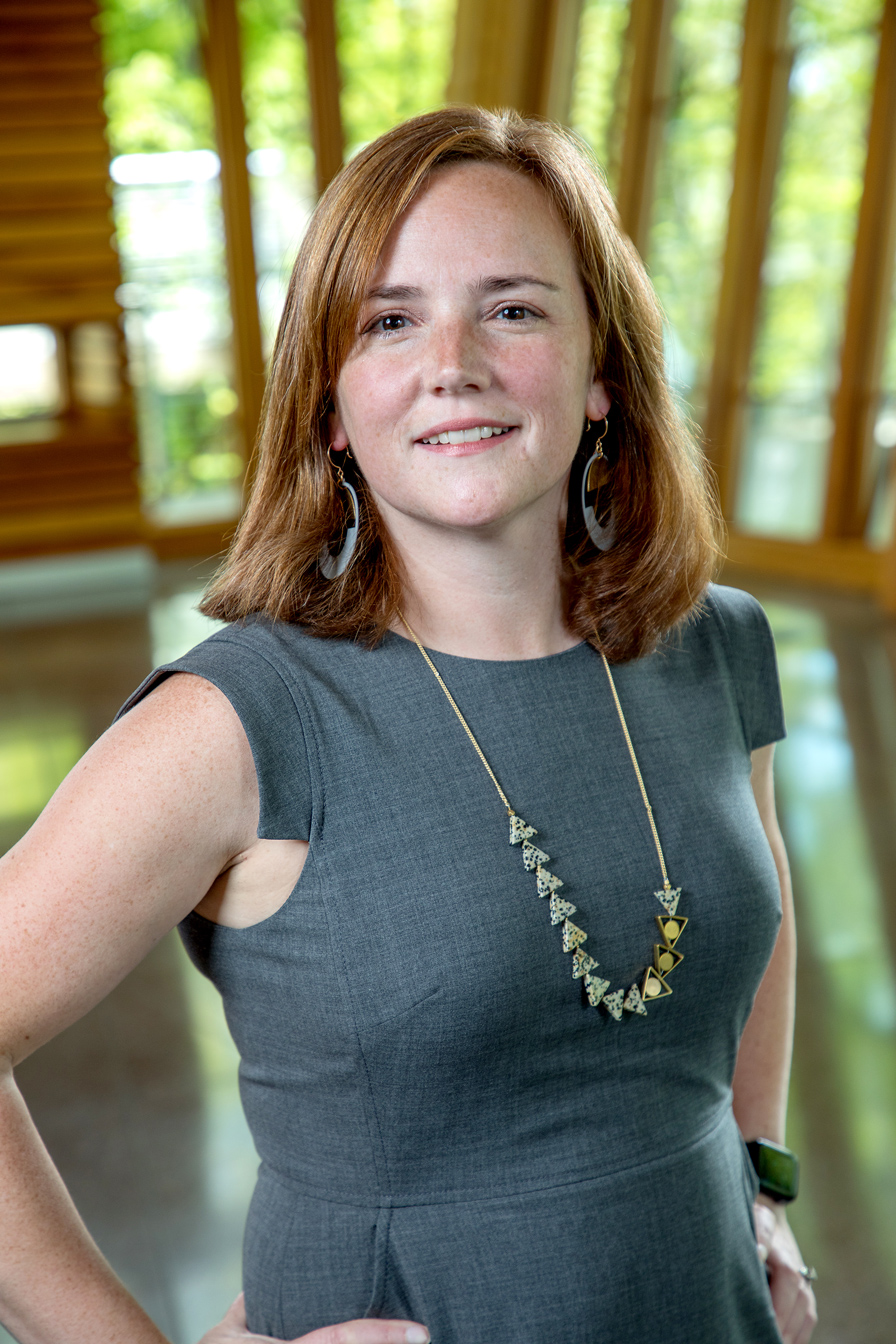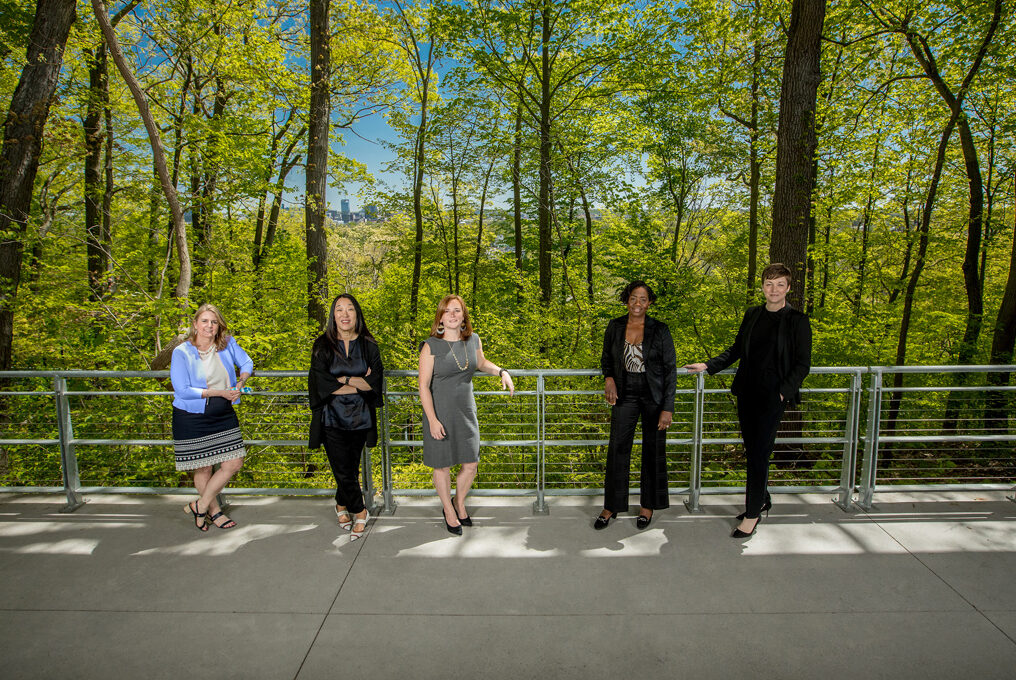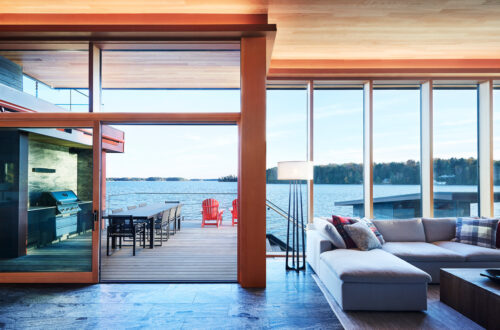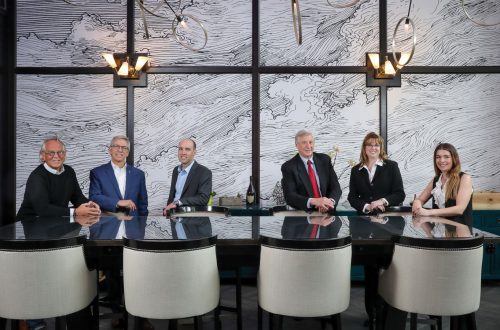Project Architect, Project Leader | INFORM Studio
Detroit, Michigan
For Megan Martin-Campbell, AIA, NCARB, LEED AP, CSI CDT, project architect and project leader at INFORM Studio in Detroit, Michigan, design is an expression of a point of view. Metaphorically, design is a conversation, a dialog between people, materials, and spatial relationships. It can also speak to the larger importance of inclusion and the creation of space that reflects those communities who use it. The well-designed, well-articulated space or structure is one that considers the diverse voices of the people who will engage and interact with it, integrating public outreach and a humanistic approach in a field where a perception of inaccessibility still permeates.
“We throw around the topics of diversity and inclusion a lot in society right now, but I think there is so much to be said on that in the architectural realm. Inclusion in architecture is not just about creating a diverse profession that represents society in the ways of race, ethnicity, gender, and ability level, but also there is a lot to be said about accessibility of architecture design—exposure to the design process being one of them and public outreach,” Martin-Campbell said.
“It is critically important that we include all kinds of people and voices in early design conversations, in practice, in implementation, and the post-occupancy of architecture. This level of inclusion is the exception and not the rule. An exclusive approach to design often results in spaces that are not representative of the people who use it and disconnected from what is actually happening there. We need to be more inclusive as a practice, both internally in the profession and externally by public outreach and community engagement if we expect our profession to be more equitable in the future,” Martin-Campbell added.
It is a conversation and issue that has inspired Martin-Campbell in her professional career and has since cultivated into a strong belief that architecture can be a tool for public engagement, particularly as she moves into her role as 2022 AIA Detroit Board of Directors President. For Martin-Campbell, who has been involved with the AIA Detroit Chapter since 2007—and has served as Vice President, Detroit Director, and Secretary for the Executive Committee in the past—the organization has provided a good avenue to not only have a broader outreach and raise awareness about the profession, but also bridge the divide between architecture as a practice and the communities who engage with it on a daily basis.
“Early in my career, I became a member of the AIA Detroit and I was involved with the House Tour Committee—basically it was a biennial tour that featured several homes and housing types. The tour was a way of doing public outreach to bridge the divide between architects and the design process, with the public all the while using the most relatable thing we have: homes. It was a tour that went on for many years, well before me, and it was part of the reason I was involved with the organization, because I really loved that public engagement part of it,” Martin-Campbell said.
“At the time, I felt like there was a disconnect between architecture as a practice and everyday lives. In my own experience, I had no direct exposure to design or architecture as a child. My exposure came from school. I was really lucky, looking back on it, that I was in an education system that had an architecture program or at least drafting classes that I could take. As an adult, I have learned that most schools don’t even have that. I was exposed to what architecture was in some small degree in middle school and more so in high school. I have learned as an adult that drafting and art classes are not widely available and especially when we look at our urban and our rural communities. It doesn’t often exist,” Martin-Campbell added.

Though hailing from a family of skilled trades, Martin-Campbell noted she was initially drawn to an artist or gardening profession at a young age—a reflection of creative, technical, and environmental interests in their own right—and she credits her curiosity and exploration in architecture and design to a middle school teacher who recognized her knack for both math and art.
“My teacher said there are a lot of people who are good at one or the other, but to be good at both was unique and so there were a couple of professions that might suit me well. Architecture being one of them,” Martin-Campbell said. “I followed that idea on through high school and some of the classes I ended up taking really led me down that path. I was really fortunate. I’m from a small town, Essexville, Michigan, and it just so happened my school, Garber High School, had a couple of architecture and drafting classes. Those classes really helped define my interests and prepared me for undergrad and eventually grad school.”
Martin-Campbell attended Lawrence Technological University in Southfield, Michigan to pursue degrees in architecture and interior architecture, combining her interest in both the exterior and interior facets of design. Martin-Campbell noted at the time it was one of the only universities in the state to offer both programs and as she went through them, her love of drafting, drawing, and details, evolved into more of a holistic exploration.
“I really loved the big picture, I just really enjoyed the exploration and learning about new ideas and new topics,” Martin-Campbell said. “I think the one thing, as architects, is that we often get this rare opportunity, an insight, into other people’s jobs and lives. As architects, we are learning how others work and live so that we can guide them and support them in the work they are doing. It’s the exploration I think that has always intrigued me about the field.”
While working as a designer with another firm in Detroit, Martin-Campbell went on to earn a Master of Architecture from Lawrence Technological University’s College of Architecture and Design before taking on the role of project architect and project leader with INFORM Studio. Based in Detroit with an additional office in Chicago, INFORM Studio is a woman-owned architectural and design practice backed by a multidisciplinary team of architects, interior designers, engineers, urban designers, and computational designers. The practice specializes in mixed-use, cultural retail, urban design, housing, and community projects, leveraging a data-led design process to realize its mission of changing the way the built environment is designed and delivered to ultimately bring positive change. In her current role at INFORM, Martin-Campbell tends to focus on community-based projects and is inspired by those where she can talk with the people who are actually going to use the space or project and work to bring in their feedback and ideas, regardless of typology.
Martin-Campbell said of the core values integrated into the work at the firm and two of them that have always resonated with her is the acronym F.A.M.I.L.Y and the saying, “Be All In, All The Time.” The former, meaning “Forget About Me, I Love You,” refers to how the team treats each other in the office as well as how they treat their clients and projects; and the latter, in many respects paralleling F.A.M.I.L.Y., goes back to taking a personal approach to things and being 100 percent in, 100 percent of the time.
“What we do is personal and we do it with the best intention and in doing that, we want to make sure all of our interactions are thoughtful and that we are not just coming to a new project with the same bag of tricks that we had for the last project. We strive to innovate in our approach and use a variety of tools to achieve the best outcomes for our projects,” Martin-Campbell said.
From virtual reality headsets and 3D print modeling to an innovative use of billboards during the pandemic to safely gather public feedback on a community project, Martin-Campbell noted the firm is always trying to innovate and take the personal approach to ensure the process works for that specific project.
“The buildings we create are for humans, and sometimes I think people forget that. I think that too often projects can come with a solution without finding a solution with the people who are using it in the end,” Martin-Campbell added.
Throughout the years, Martin-Campbell has also been involved on the Lawrence Technological University Architecture and Design Alumni Cabinet as Chair and the Planning Commission and Downtown Development Authority as Commissioner for the City of Pleasant Ridge, Michigan, alongside her work with AIA Detroit and INFORM Studio. Martin-Campbell said that her continued involvement with AIA Detroit—in addition to increase accessibility—has also stemmed from wanting to be an example in the field for people as a woman and as a mother, and ensure she has a voice at the table.
“I would like to see the field of architecture be more represented in the people we see walking by us every day on the street and look more like society. I think the more diverse voices you have in something, the better the design is going to be. Increased diversity leads to increased quality. And with more people involved, then that creates more dialog, interest, and better outcomes,” Martin-Campbell said. “Regardless of what the profession has been, we need to keep moving the needle forward and I think if we want to get to where we want to be, we really need to bring more voices—and a diverse set of voices—into that conversation.”
Though there are a number of issues facing architecture today in different areas, such as equity and social justice, universal accessibility, climate change and need for improved infrastructure; and innovations in data-driven design, artificial intelligence, digital fabrication, and community activism, Martin-Campbell said for those interested in the field and aspiring young architects or designers, her advice would be to be curious and always feed that curiosity.
“If you are pursuing a design education or are interested in the built environment of your own community, I think that you have an opportunity to really explore and ask questions. Hand-in-hand with that is to not accept the status quo on things. Continue to push your voice to be included. I’ve been involved with planning commissions and downtown development authorities and I wish that more people would be involved with these governmental entities, both at the table and in the audience, to have their voice be heard on projects,” Martin-Campbell said. “If we encourage our fellow citizens to be curious, I think it will really help expand where the design professions go and how design is engaged with communities.”
One example she noted was in the area of sustainability, where once there is a momentum generated as people begin to question why things are done a certain way, how energy can be saved, or how more local resources can be leveraged, Martin-Campbell said the needle on critical issues starts to move.
“I wish we could have that dialogue with architecture and design and how it gets represented, especially in community-type projects so that you can really start to push that needle more and more into the voice and desires of what that community wants and the users, the end users want,” Martin-Campbell said.
“I’m really grateful for the experiences that I have had in my life, I have really tried to find the opportunity in those moments. I grew up in a rural area in a modest family. My sister and I were the first in our family to go to college and have student loans. I have had hardships and had to navigate a lot on my own in my life and in my career. I say this not for compassion, but for visibility and awareness. People and programs guided and invested in me along the way. I didn’t have it easy, but I am aware that a lot of people in society haven’t had the opportunities that I had. It is a passion of mine to try to be that person or program that helps to include people. My AIA Involvement speaks to that. Inclusion is a complex issue and it is hard to make an impact on an individual project. If you want to move the needle on inclusion and getting more diverse voices in the field, you can’t do it on a project-by-project basis, those changes just don’t happen enough and so AIA has been a good avenue for taking some of those ideas and being able to have a broader outreach,” Martin-Campbell added.
First published in Great Lakes By Design: Architectonics, 2021
Text: R.J. Weick
Photography: (profile) M-Buck Studio LLC
2021 Architects






